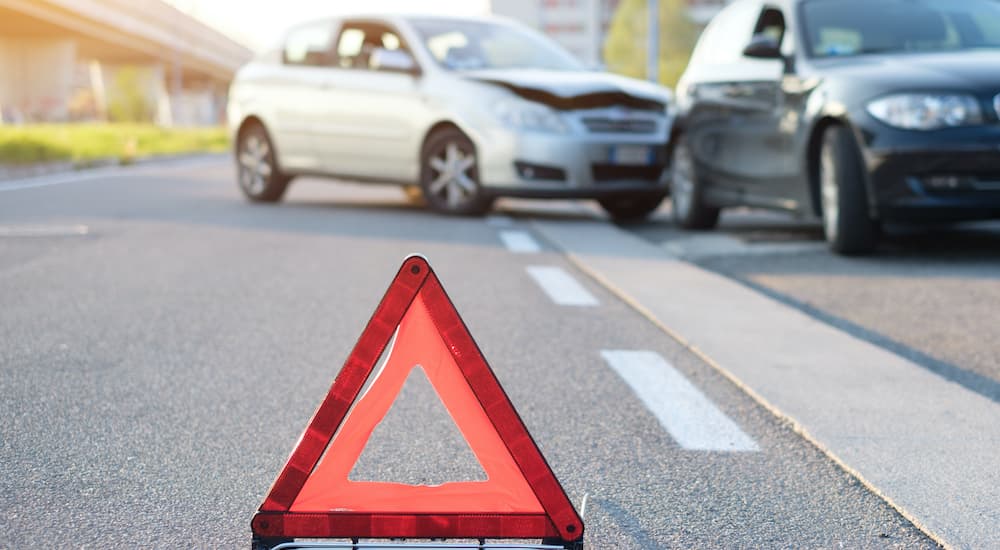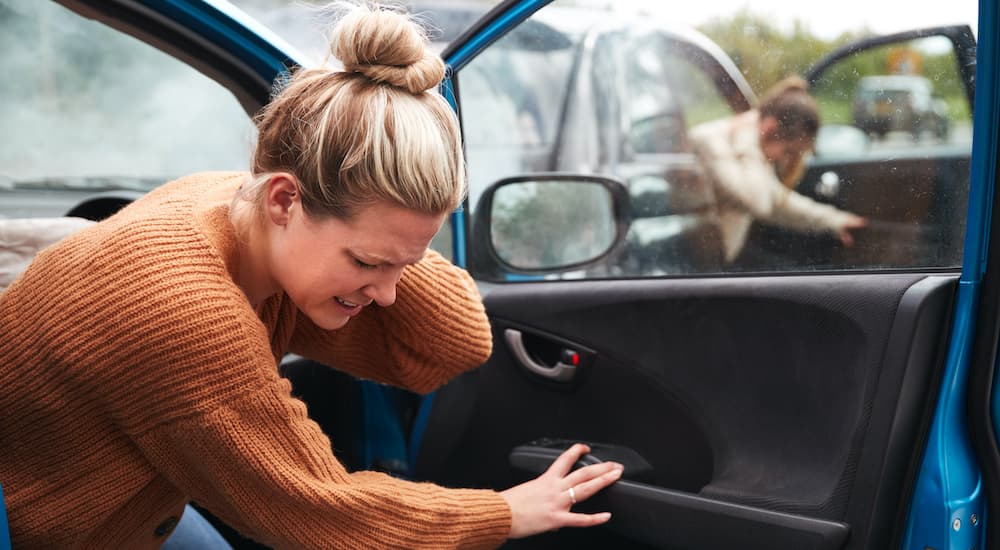Before you find yourself at a collision repair center, a little knowledge about common vehicle accidents and their causes could help you avoid costly bills or injuries. According to the National Highway Traffic Safety Administration, or NHTSA, motor vehicle accidents in 2019 numbered 6,756,000. Most accidents are preventable, particularly those caused by human error. Whether an accident is the result of distracted driving or driving under the influence of alcohol, the results still lead to loss of life, destruction of property, or injuries that can affect the quality of your life. Every driver can help alleviate the dangers of driving. Be aware of how behavior affects your driving capability, and review these helpful tips to stay safe.
How Accidents Happen on the Road
A common cause of accidents in today’s tech-oriented lifestyle is distracted driving. This includes texting while driving, which has unfortunately increased dramatically over the last ten years. An International Institute of Highway Safety, or IIHS, study suggests that drivers who used cell phones behind the wheel tended to engage in more risky driving behavior like frequent lane changes, driving faster, or braking suddenly.
The NHTSA states that sending or reading a text typically takes about five seconds. Five seconds is enough time to travel the length of a football field at the speed of 55 mph. That’s a long time with your eyes off the road. Though cell phone use is a growing concern, it’s not the only form of distraction. Eating or drinking, chatting with a passenger, looking at maps or navigation, or adjusting the stereo are all included in this category. Basically, anything that takes your eyes off the road can mean you not seeing a potential impact.
Being drowsy or exhausted while you drive can severely impair one’s ability to maintain focus. Americans often experience sleep deprivation for a variety of reasons, whether we have babies or young children interrupting sleep, stay up too late and wake too early, or simply suffer from insomnia. Regardless of the cause, resulting crashes can be highly dangerous. In 2017, the NHTSA estimated that as many as 91,000 crashes reported by police included drivers experiencing drowsiness, and as many as 50,000 of those crashes resulted in injuries.
Though we can’t always help being tired, we can take precautions to avoid driving when there is a danger of falling asleep at the wheel. Avoid driving at times when most people tend to be drowsy, such as between midnight and 6 am or in the late afternoon. Take care to rest well before a long trip, or make sure you have a companion to help you watch the road on highways or rural roads. If you become tired while driving, pulling over for a 20-minute nap after a cup of coffee can help you reach your destination safely.
Regardless of how often you drive, virtually everyone knows that driving under the influence of drugs or alcohol can also be deadly. It’s also considered negligence under the law. People die from drunk driving-related accidents daily, at the rate of one person every 52 minutes in the US.
By measuring blood alcohol content (BAC) with a breathalyzer, police or emergency responders will know whether or not a person has been drinking. When BAC reaches .05, a number of effects can limit driving capability. Poor coordination, slower reflexes, and inhibited ability to respond to urgent situations are all side effects of alcohol consumption. Despite the legal limit being .08, NHTSA reported 1,775 deaths as a result of alcohol impairment—and those were just the drivers whose BAC measured between .01 and .07.
Drugs can have varying effects on driving as well, depending on the type and dosage. Whether considered a prescription, over-the-counter, or illegal substance, any type of drug that changes a person’s ability to think or react is best avoided before driving. This includes opioids, marijuana, methamphetamines, barbiturates, and even some allergy medications. If in doubt, ask your doctor or simply wait to take a medication until you can be certain you won’t have to drive. Find someone who can drive you if you have been drinking or need to take medication, or use a taxi or ride-sharing service. At the very least, hand over your keys to someone you trust if you suspect your motor skills might be compromised.
Another widespread cause of accidents is a behavior almost every motorist has probably engaged in (more often than they are willing to admit): speeding. Whether they’re driving a few miles per hour over the speed limit or racing down the highway in a hurry to get somewhere, most drivers are guilty of speeding occasionally. This falls under the category of reckless driving and is also considered negligent under the law. Engaging in speeding can lead to more serious consequences than just a ticket and fines.
According to the NHTSA, speeding accounted for about one-third of the total deaths from motor vehicle accidents over two decades. Though most of us push the needle to drive a few miles per hour faster, it’s more about the side effects of going too fast than the speed itself. Your vehicle loses control more easily, plus there is an increased severity of injury and a higher rate of fatality the faster you go. In addition, running lights, weaving in traffic, and tailgating all constitute reckless driving and put you at risk.
The answer? Leave early and work on being calm. Slow down and save lives.
The Impact of Accidents
It’s one thing to know what causes an accident; it’s another to see the reality of it. So often drivers may be wrapped up in their momentary distractions that it’s easy to forget about the fact that you are driving a machine that weighs hundreds of pounds. The faster you drive, the more deadly that machine gets.
For instance, as we speed along on the highway, more often than not we may feel inconvenienced by road work. This is understandable; it places limitations on roadways and requires us to slow down. What we may not be thinking about is the fact that construction work often takes place right next to high-speed traffic. Construction workers, emergency responders, police officers, and even people experiencing car trouble could all be fatally injured if hit by a passing vehicle at high speeds. Accidents on the interstate can be some of the most severe, because speed is devastating to pedestrians.
Closely related to high-speed accidents are rear-end impacts, which are also common on highways. Even at low speeds, rear-ending a vehicle in front of you can cause whiplash in the other driver. In 2019, the NHTSA stated that the total number of rear-end impacts was 2,194,000 just for that year, and of those reported accidents, 600,000 resulted in injuries. Over 32 percent of accidents were rear-end impacts—more than any other type. Distracted driving is certainly one of the top contributors to these figures.
When impacts occur in an intersection, one vehicle will often side-swipe another. Usually, these types of accidents happen because of driver error. Often, unfortunately, a driver may succumb to distractions like their phone, the radio, or scenery.
More deadly, though, are head-on collisions. Whether you hit another vehicle, a large animal like a deer, or a tree, hitting anything head-on can be disastrous. Ten percent of these accidents were fatal in 2019—the third-highest percentage for deaths from vehicle impacts. Causes are varied, but distraction and drowsiness are certainly reasons for these collisions.
What to Do if You’re in an Accident
Accidents can happen to anyone at some point. If we’re lucky, they aren’t fatal…and we walk away without injuries. However, knowing how to react after an accident is nearly as important as accident prevention itself.
Call 911 immediately, and follow their instructions. These will vary based on your exact scenario. Many newer vehicles come with connected services that can contact emergency assistance, even if you are unconscious. If you can, approach any other individuals involved in the accident to check on them. Above all, do your best to avoid an accident: drive sober, well-rested, and with your full attention on the road.






